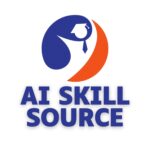
Introduction to Studying and Improvement ROI
Studying and improvement (L&D) are crucial elements of any group’s development and success technique. It’s about bettering a particular person and group’s abilities and competence, enhancing organizational efficiency, and attaining enterprise objectives. Nevertheless, for any enterprise funding, be it in expertise, advertising and marketing, or worker improvement, it’s essential to grasp its return on funding (ROI) to find out its worth and influence.
ROI, in its easiest definition, is a method of figuring out the effectiveness or profitability of funding. When utilized for studying and improvement, it entails measuring the financial worth these initiatives produce relative to their value. The financial worth could embody a variety of outcomes, together with improved worker productiveness, increased buyer satisfaction charges, lowered worker turnover, and even new enterprise alternatives.
Figuring out the ROI of L&D initiatives is integral as a result it justifies the price of these packages. In lots of organizations, the L&D finances are among the first to be reduced in difficult monetary instances. Nevertheless, in the event you can display a transparent, constructive ROI from these initiatives, it may be their funding and guarantee continuity of abilities and information enhancement inside your group.
Moreover, assessing ROI will not be just for the sake of monetary justification. It additionally serves as a beneficial device for program enhancement. By monitoring the effectivity and effectiveness of L&D initiatives, organizations can pinpoint strengths and weaknesses, serving to refine their strategy, methodologies, and even content material to garner higher outcomes.
To efficiently assess the ROI of studying and improvement initiatives, several key metrics should be thought of. These metrics, which we’ll delve into deeper within the following chapters, present beneficial insights into the direct and oblique influence of your L&D packages. They could embody metrics associated with monetary efficiency, particular worker conduct adjustments, improved productiveness charges, or increased buyer satisfaction scores. Moreover, it’s necessary to remember that ROI doesn’t at all times should be monetary. There are non-financial ROIs that might form the strategic course and future development of a company.
As we transfer ahead on this dialogue, it’s necessary to not forget that one of many important challenges in calculating the ROI of L&D initiatives is the truth that it’s not a simple course. It entails planning, time, and assets, and generally, the outcomes are probably not quick, making it a posh but worthwhile job.
In conclusion, understanding and assessing the ROI of studying and improving will not be a possibility; an enterprise necessity. It formulates a compelling argument for investing in your workforce, supplies definitive knowledge to drive L&D methods, and ensures the long-term success and monetary well-being of your group. The next chapters will additional information on the completely different metrics used to evaluate the ROI and, the challenges concerned, and can conclude with some profitable case research.

Understanding Key Metrics in Studying and Improvement
Key metrics for assessing studying and improvement, also known as coaching and improvement, are important elements in figuring out the general influence of a company’s L&D packages. They supply quantifiable knowledge that may assist decide how efficient a studying program is and what its return on funding (ROI) is likely to be. These metrics can span from conventional analysis fashions just like the Kirkpatrick Mannequin to extra trendy metrics which contemplate each quantitative and qualitative element.
The commonest metrics employed within the evaluation of L&D embody:
1. Completion Charges: This simple metric measures the share of workers who end a delegated coaching program in comparison with those who begin it. Excessive completion charges can denote a program’s enchantment and effectiveness, whereas low charges could point out points with course design, content material, size, or supply.
2. Information Acquisition: Usually measured by means of quizzes, checks, or assessments throughout or following coaching, this metric evaluates if the learner is absorbing the course materials. Information acquisition measurement can present a perception of the effectiveness of studying supplies and instruction strategies.
3. Expertise Gained or Improved: This extra nuanced metric measures the sensible positive aspects of coaching. It might contain self-assessments, efficiency checks, or observations and often requires a before-and-after comparability. This evaluation can replicate the real-world software of the educational program.
4. Conduct Adjustments: This metric appears to be like adjustments in workers’ day-to-day behaviours following coaching. Are educated workers implementing their new information and abilities on the job? That is often noticed over time and will require suggestions from managers or friends.
5. Worker Satisfaction: Studying must be a fascinating expertise. Utilizing surveys to collect suggestions post-training can present perception into how learners perceived the course. Was it helpful? Was it partaking? This knowledge can assist enhance future coaching packages.
6. Enterprise Impression: Does the educational program result in improved enterprise metrics? It may very well be increased gross sales figures, improved buyer satisfaction scores, or lowered manufacturing errors, as an illustration. This metric connects studying with its tangible advantages for the group.
7. Return on Expectations (ROE): Measured by aligning the outcomes of the educational program with the goals set by key stakeholders or the group, this usually overreaches the ROI because it ties the educational’s influence to enterprise goals and expectations instantly.
Bear in mind, that the usage of these metrics isn’t a one-size-fits-all strategy. Totally different coaching packages could have various objectives, and as such, would require an appropriately tailor-made assortment of metrics. The hot button is to ensure alignment with the general enterprise technique and goals. Using a mixture of these key metrics would supply an extra balanced view of studying and improving effectiveness and ROI.

Evaluation of Studying and Improvement Effectiveness
The inherent goal of any studying and improvement (L&D) concerned inside a company is to boost its workers’ abilities, information, and total efficiency capabilities. Subsequently, assessing the effectiveness of such packages is arguably as essential because of the packages themselves. By figuring out what works and what doesn’t, companies can iteratively refine their L&D methods for higher outcomes.
To achieve a correct understanding of the effectiveness of L&D initiatives, several essential metrics must be considered:
1. **Studying Retention:** The final word aim of any study program is long-term information retention. Therefore, it’s important to trace how effectively individuals bear in mind and apply what they’ve realized over time.
2. **Suggestions from Contributors:** Direct suggestions from those who participated within the packages supply beneficial perception into features like how partaking or useful the course was and areas for enhancement.
3. **On-the-job Software:** Following up on how a lot of the realized information is being virtually utilized on the job is a robust indicator of this system’s effectiveness.
4. **Segmented Knowledge Evaluation:** Breaking down the evaluation based mostly on completely different demographics, job roles, and departments could give a deeper perception.
5. **Benchmarking in Opposition to Business:** Evaluating your program’s outcomes in opposition to business requirements can present a goal measure of its effectiveness.
Nevertheless, these metrics alone may not suffice in giving a complete image of the L&D effectiveness; therefore they need to be intently linked to broader enterprise metrics. One strategy is utilizing the Kirkpatrick Mannequin, a widely known commonplace for evaluating the effectiveness of coaching.
1. **Stage 1 – Response**: Evaluate how the trainees reacted to the coaching. This step measures satisfaction aka ‘the glad sheet.’
2. **Stage 2 – Studying**: Exams whether or not the individuals have actually understood the brand new info and have turned out to be proficient in their information or abilities.
3. **Stage 3 – Conduct**: Assesses if the individuals are utilizing what they realized of their work, often measured a number of months post-training.
4. **Stage 4 – Outcomes**: Evaluate if the coaching and subsequent reinforcement facilitate the specified change within the group. This may very well be elevated gross sales, improved productiveness, or an extra harmonious office.
When assessing L&D effectiveness, it’s really useful to make use of a mixture of these quantitative and qualitative metrics to realize a holistic view. Bear in mind additionally to be real looking about expectations and timeframes over which enhancements will materialize; some advantages could not turn out to be obvious instantly.
Lastly, steady enhancement must be the rule when assessing L&D effectiveness. Commonly collect and analyze knowledge, make needed changes, and repeat the method. This iterative strategy won’t solely assist display the ROI of your L&D packages but additionally allow your group to construct extra partaking and impactful experiences for its learners over time.

Evaluating the Impression of Coaching on Worker Efficiency
Coaching performs a major function in bettering the efficiency of workers. In essence, workers who are educated effectively are likely to carry out higher, as coaching equips them with needed abilities, information, and competencies. Nevertheless, it’s not sufficient to easily undertake coaching; the influence of this coaching on worker efficiency must be assessed.
One of many methods to judge the influence of coaching on worker efficiency is through common suggestions and efficiency evaluations. Managers can make use of numerous scoring programs and efficiency metrics, thus enabling them to evaluate the distinction in a worker’s efficiency pre and post-training.
For example, if a customer support worker has undergone coaching in communication and relationship-building, then there is likely to be a measurable enhancement within the stage of buyer satisfaction they ship. This may very well be quantified by means of buyer surveys and suggestions varieties.
Evaluating the influence of coaching on worker productiveness may present insights into the effectiveness of your coaching packages. The more a worker is educated, the higher their capacity to execute duties effectively. By evaluating productiveness charges earlier than and after coaching, companies can decide if the coaching has had a constructive impact.
In gross sales, coaching usually focuses on enhancing promoting abilities and bettering information concerning the firm’s services or products. One efficient technique to assess the influence of this coaching on worker efficiency is by analyzing the change in gross sales figures earlier than and after the worker has been educated.
Additionally to this, the general high quality of labour may be one other potent parameter. After coaching, if the variety of errors or complaints is lower or the dependability of the worker on others diminishes, it’s a constructive indication of the influence of coaching on the standard of labour.
Nevertheless, it’s essential to not forget that time is a related issue when figuring out the influence of coaching. Quick enhancements are probably not noticeable, however over time, incremental adjustments can result in important enhancements.
One other important facet is utilizing key efficiency indicators (KPIs), which are particular measurements that may assist assess the success of coaching. These KPIs may be completely different for each firm, relying on their enterprise mannequin, business, and function or division in query. Examples of KPIs may very well be the speed of buyer complaints, the variety of manufacturing errors, or gross sales charges.
Lastly, an often-overlooked tactic is to ask workers for his or her ideas on the coaching they’ve obtained. By issuing nameless surveys or questionnaires, companies can acquire a deeper understanding of how the workers view the efficacy of coaching packages. Worker insights may be invaluable in refining and bettering future coaching packages.
Conclusively, assessing the influence of coaching on worker efficiency is both artwork and science. Employers must have a multi-layered strategy, which takes under consideration qualitative and quantitative knowledge while contemplating very important features like time, function, KPIs, and naturally, the worker’s suggestions.

Monetary Metrics for Figuring out Studying and Improvement ROI
Efficient analysis of studying and improvement (L&D) packages depends upon several elements. Amongst them, monetary metrics maintain excessive significance when figuring out L&D return on funding (ROI). Right here’s a rundown of the first elements.
Value Financial savings: The primary metric on the listing. Value financial savings may be achieved by lowering coaching time, supplies, and instructors’ prices. L&D initiatives usually use methods reminiscent of online coaching modules that can be utilized repetitively, therefore minimizing the associated fee.
Income Era: A well-implemented coaching program can improve the abilities of your workers, resulting in an enhancement in job efficiency. This improved efficiency can assist in boosting gross sales figures, resulting in an increase in income.
Turnover Discount: Offering ample coaching and improvement alternatives can’t solely improve the abilities of your workers, but additionally foster loyalty. This loyalty can translate into longer tenures, thereby lowering the prices concerned with hiring and onboarding new workers.
Productiveness Measures: L&D initiatives enhance productiveness by nurturing extra successful, and environment-friendly workers. This elevated productiveness may very well be assessed by monitoring particular key efficiency indicators (KPIs) just as the gross sales quantity per worker, the variety of buyer assist tickets solved per day, or the time taken to develop a brand new product.
Operational Effectivity: Enhancements in operational effectivity may be one other helpful monetary metric. Coaching packages usually goal course of enhancements, specializing in easy methods to make work extra environment friendly. Reductions in waste, time financial savings, and elevated throughput all relate to bettering the underside line.
Lowered Threat And Compliance Prices: Satisfactory L&D initiatives can assist organizations keep away from hefty fines and lawsuits that come from non-compliance. The associated fee financial savings from a well-trained, compliant workforce generally is an important part of the ROI calculation.
Elevated Market Share: Improvement packages that improve workers’ abilities can result in aggressive benefits. These benefits can manifest as an elevated market share in your firm, which is a transparent monetary acquisition.
Investor Perceptions: Stable funding in human capital could make an agency extra enticing to buyers. Subsequently, L&D can influence the monetary bottom line by raising an agency’s total valuation.
Whereas these monetary metrics play an important function in assessing the ROI of studying and improvement packages, they should be mixed with non-financial indicators to supply a complete image of the effectiveness and effectivity of L&D initiatives. Within the subsequent chapter, we’ll talk about these non-financial metrics in an additional element.

Non-Monetary Metrics for Evaluating Studying and Improvement ROI
Whereas monetary sense is the main drive behind most company coaching and improvement investments, non-financial metrics can present nuanced insights into the true influence of those initiatives. These metrics dig deeper to uncover the qualitative aspects of studying and improvement (L&D) that replicate how studying is reworking group capabilities and shaping the corporate tradition.
Worker Satisfaction: Worker satisfaction has a direct influence on numerous features of a company – from worker retention to the work atmosphere. If workers are glad with their studying alternatives, it’s a clear indicator that your studying and improvement packages are efficient. Common surveys and suggestions classes can observe worker satisfaction ranges after attending coaching packages, which can assist the group in establishing areas of enhancement.
Information Acquisition: It is a simple measure of a learner’s progress. It gauges whether or not the information base of a worker has improved post-training. Platforms used for eLearning usually have in-built progress monitoring, providing you metrics to point out who’s gaining from this system and who may have further assistance.
Expertise Software: Nevertheless, information isn’t the top aim. It’s necessary to trace whether or not workers are literally making use of gained information in their day-to-day actions. Common efficiency evaluations can establish whether or not workers are using their new abilities, and to what diploma. One can measure this by evaluating pre-training and post-training efficiency assessments.
Cultural Impression: Cultural influence refers back to the methods L&D packages form the core values and attitudes inside your group. By inspiring collaboration, encouraging innovation, and selling a development mindset, well-structured coaching can progressively rework the way in which folks strategy their work. Measuring the cultural influence of L&D is commonly subjective, often surveyed from worker suggestions.
Job Position Effectivity: Non-financial metrics additionally embody measuring job function effectivity after workers have undergone coaching. A rise in productiveness mirrored in higher challenge completion instances, improved gross sales numbers, decreased manufacturing errors, and so on., suggests a constructive ROI out of your L&D initiatives.
Conduct Change: L&D also needs to deliver worth using conduct change. This may very well be enhancements in management, teamwork, and buyer dealing, amongst others. By observing these adjustments, corporations can assess the effectiveness of their studying and improvement initiatives.
Studying Curve: This measures the time taken by a worker to turn out to be proficient in a brand-new talent A shorter studying curve may indicate that the coaching strategies being employed are efficient.
Worker Retention: Excessive-quality coaching makes workers really feel valued and aids in their professional development, naturally making your group a fascinating place to work. By monitoring worker turnover earlier than and after necessary L&D initiatives, you’ll get a good suggestion of their effectiveness.
Identical to monetary metrics, these non-financial indicators present a holistic view of your L&D ROI. Leaders should guarantee they steadiness the quantitative with the qualitative to realize an entire and true image of their coaching packages’ effectiveness. Incorporating these non-financial metrics into your commonplace measurement course will spotlight the true worth your L&D initiatives deliver to the group.

Challenges in Measuring Studying and Improvement ROI
Measuring the return on funding (ROI) in studying and improvement (L&D) packages is a difficult job, primarily as a result of the multifaceted and oblique impacts of those initiatives. Understanding these challenges may assist organizations develop extra strong methods for assessing the effectiveness of their L&D initiatives. Right here, we discover some frequent points companies face when trying to quantify their L&D ROI.
One of many fundamental challenges is defining and figuring out the direct outcomes of L&D initiatives. The influence of those initiatives usually manifests over time, and will in a roundabout way translate into measurable numbers. Upgrades in abilities or adjustments in conduct, which are the main goals of any L&D funding, take time to transform into elevated productivity or improved high-quality labour.
Consequently, figuring out the causality between L&D initiatives and these enhancements would possibly current an issue. Staff’s efficiency could be enhanced as a consequence of a number of contributory elements apart from the L&D packages, reminiscent of the workers’ dedication, work atmosphere, managerial assistance or interplay with colleagues. Thus, linking enhancements solely to L&D initiatives may be sophisticated.
There’s additionally the difficulty of quantifying the monetary influence of enhancements or adjustments brought on by L&D initiatives. Whereas some impacts are likely to be simpler to measure, reminiscent of a discount in manufacturing time resulting in value financial savings, others like elevated morale or improved group cohesion are a lot more durable to translate into financial phrases. The problem lies in creating constant and customarily accepted strategies for changing qualitative knowledge into quantifiable returns. The subsequent problem is deciding on an acceptable timeframe to evaluate impacts. L&D packages are supposed for long-term advantages. Nevertheless, organizations usually dip into short-time body ROI evaluation, offering solely a short-lived image. Studying is a steady course, and its results may be noticed years after the preliminary coaching interval.
Lastly, one also needs to account for the truth that expertise is reshaping the panorama of studying, making it much more very important however difficult to measure ROI. With digital studying platforms and more and more distant work situations, knowledge is extra accessible and extra scattered. Understanding and navigating knowledge privateness considerations, technological disparities, and a probably extra disconnected learner base present further hurdles.
Regardless of the challenges, organizations should try to search for methods to judge the ROI of their L&D packages. Whether or not using conventional monetary metrics or extra trendy non-financial measures reminiscent of studying analytics, having some measure of ROI can justify L&D investments and assist in planning future studying methods. Subsequently, understanding these complexities and challenges is step one to raising measures and enhancing the ROI of studying and improvement initiatives.
Case Research: Profitable Evaluation of Studying and Improvement ROI
Assessing the return on funding (ROI) for studying and improvement (L&D) initiatives may be advanced, however numerous corporations have efficiently achieved this. By analyzing and extracting classes from their method wecasinoo acquires s higher perception of easy methods to measure and consider L&D ROI successfully.
Case Examine 1: Know-how Firm
At a number one expertise firm, the L&D group developed a customized coaching program supposed to boost their software program engineers’ coding abilities. To measure the ROI, they utilized efficiency metrics reminiscent of error charges, code rework cases, and the time taken to develop a software program characteristic. These have been measured pre-and post-training. The consequence was a major enhancement in coding high quality and productiveness, demonstrating a constructive ROI on their L&D funding.
To enrich laborious metrics, in addition, they used worker survey knowledge to gauge the perceived worth of the coaching, which returned extremely constructive suggestions and confirmed a rise in job satisfaction. These outcomes spotlight the effectiveness of marrying laborious efficiency metrics with mushy, subjective metrics to measure L&D influence.
Case Examine 2: Healthcare GroupAnA outstanding healthcare group launched a management improvement program for her middle-management group. To measure the ROI, they tracked promotion charges and attrition charges of the individuals. They in contrast these charges with an analogous group that didn’t undergo this system.
After two years, the corporation noticed a better promotion price and a decreased attrition price within the group that underwent this system. The group was capable of retaining extra high-potential workers, resulting in financial savings in recruitment and onboarding prices, subsequently offering a constructive ROI for his or her L&D initiative. This case research stresses that ROI in L&D can usually be a long-term acquisition rather than an instantaneous monetary return.
Case Examine 3: Monetary Companies Agency
A big monetary providers agency launched a gross sales coaching program aimed toward bettering the abilities of their gross sales group. The agency developed particular key efficiency indicators (KPIs) to measure this system’s influence. These KPIs included the common measurement of the offers closed, the gross sales cycle time, and the conversion price.
Put training, the agency reported enhancements in all these metrics, demonstrating a considerable enhancement in gross sales effectivity. This case research underscores the significance of selecting related and particular KPIs to gauge the L&D ROI precisely.
All three circumstances display that measuring L&D ROI may be successfully achieved using a mixture of related laborious metrics, subjective knowledge, and persistence to comprehend the long-term positive aspects. Moreover, they present the significance of aligning L&D packages with total enterprise objectives for maximum organizational profit.
……………….
BSB UNIVERSITY LEARN AND EARN AISKILLSOURCE.COM










